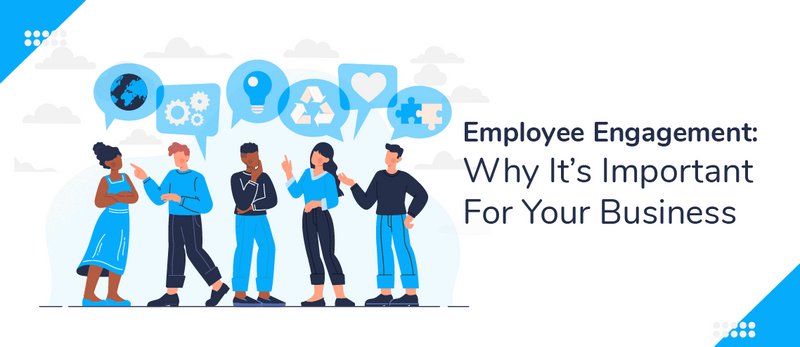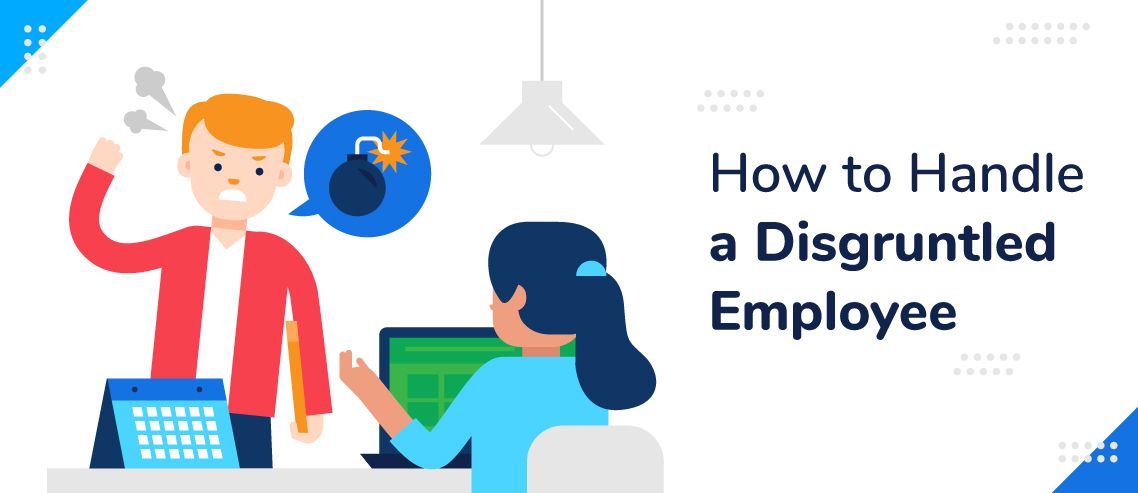Employee Engagement: Why It’s Important For Your Business

Once upon a time, employees were expected to turn up for work and put in the hours, with little regard for how they felt about their organization’s vision or direction.
Today, with increased mobility between jobs and greater competition for talent, disengaged employees have little reason to stick around. If your workers don’t feel bought into their role, expect them to jump ship for a different employer, leaving you forced to hunt around for a replacement. On the other hand, when they do feel engaged, there’s a good chance they’ll stay with you for the long term.
However, improving employee engagement is about much more than reducing attrition; it has a measurable impact across multiple areas of a business. An engaged workforce can make the difference between falling short of your business goals or hitting and surpassing them.
What is Employee Engagement?
An engaged employee feels valued and enjoys what they do, which shows through in their work. You can tell by the way they contribute to meetings, their comfort level in offering feedback, and a general sense that they’re happy with where they’re at. An engaged employee is one that has a sense of purpose in their role and the autonomy to perform their job.
A disengaged employee, on the other hand, is an individual who does not care about the company or their work. This type of person will likely show up late, leave early, and spend the majority of the day focusing on unproductive tasks that don’t align with the goals of the company. Disengaged employees can be detrimental to a team because other team members will have to pick up the slack and not be able to rely on this person to get tasks done. This can also spread negativity in the workplace, bringing down other employees and causing them to be less productive than they otherwise could be.
Is Employee Engagement the Same as Employee Satisfaction?
The terms “employee engagement” and “employee satisfaction” are often discussed simultaneously, and sometimes even used synonymously. In reality, they are quite different, although there is naturally some overlap between the two.
Employee satisfaction is far more limited in scope, speaking only to the level of happiness among your workforce. That means it excludes a wealth of key factors, such as:
- Commitment to the cause
- Motivation in their role
- Emotional attachment to their position, team, and organization
In this way, a “satisfied” employee — or even a “happy” one –– might feel completely uncommitted to their employer and have little motivation to help it succeed. They may simply be content because they feel secure in their position and are happy with their paycheck.
It’s certainly true that a focus on employee satisfaction will typically result in a working environment that feels more positive. However, there are no guarantees that the changes you make will have a positive impact on performance — in fact, they may even have the opposite effect.
While it might be “nice” to work in low-stress conditions in which nothing ever changes, those conditions can often prove demotivating and even stifling to top-tier performers who actively enjoy upheaval and challenging outdated thinking.
What Are the Benefits of Workforce Engagement?
Employee engagement isn’t about making people feel happier at work simply because it’s a “nice thing to do”. There are specific, tangible benefits to building a more engaged workforce, such as preventing turnover from disengaged employees.
The Work Institute claims the real cost of replacing an employee who leaves their job ranges from 33% to 300% of their salary. In other words, losing a $75,000-a-year employee could set you back between $25,000 and $150,000. Either way, that’s money virtually all organizations would prefer not to lose.
Even if the only benefit of improving employee engagement was lower attrition, it would still be worth your attention. Once you factor in all those other benefits — reduced absenteeism, higher productivity, increased profits, it becomes impossible to ignore. It’s hard to imagine a single other workplace initiatives capable of driving such significant results.
Which Factors Contribute to Improved Employee Engagement?
Wondering how to improve employee engagement? Before you start, you first need to understand the underlying factors that separate engaged workforces from disengaged ones.
Clearly, this isn’t an exact science; what makes a person feel “engaged” will vary from one employee to another. However, engaged employees typically share the following characteristics:
- They have the autonomy to perform the job that they were hired to do while having all of the resources and equipment readily available to them
- They feel as though they can grow with their career and not be hindered by a glass ceiling
- Their individual strengths shine through in their work and have a generally positive impact on their team and the overall company culture
- They feel heard when it comes to their opinions and feedback given to leadership
There are plenty of other factors that attribute to employees feeling engaged. Let’s take a look at how you can create an entire culture of engagement for your employees.
How to Improve Employee Engagement
We now know exactly what employee engagement is (and isn’t). We’re clear on the benefits that it enables and the factors that influence it. Now, let’s put all of that together and look at five ways for how to engage employees:
1. Recognize Great Work
Building a culture of recognizing and rewarding positive behaviors and high-quality work is a key step to driving workforce engagement.
So where should this recognition come from?
Direct managers have an immediate impact on employees and are one of the primary resources for developing engaged employees. People managers at all levels of your organization should be encouraged to provide more regular feedback to direct reports, offering actionable advice where necessary, and applauding good work when the results justify it.
However, different types of feedback can be more meaningful for different employees. Some will appreciate public recognition, such as celebrating their efforts in the team or company-wide meetings, while others prefer to be praised in private; they may actively dislike being the center of attention and thereby find public recognition demotivating.
The best approach, therefore, is for direct managers to speak to their team members and ask them exactly how they would want their great work to be recognized.
2. Build a More Trusting Environment
Trust is another crucial factor in building an engaged workforce. It’s hard, if not impossible, for people to feel engaged in their roles if they don’t feel trusted to do their job well, and don’t trust their peers, managers, or senior leadership to take the right actions and decisions.
As alluded to in the previous point, communication is the key to creating a more trusting workplace environment. Solicit regular feedback from employees on their general sentiment and engagement in their work, and also on more specific matters — what do they think of the new office layout? How do they feel about your hybrid working strategy? Are they satisfied with the amount of training they receive?
There are lots of ways to gather feedback, from employee survey tools to public town hall sessions and one-to-one meetings between line managers and direct reports. As ever, different approaches will yield different results for different organizations; test multiple strategies to see what works best for you.
It’s also important to note that gathering feedback is only one part of the process. To be impactful, employees must feel that managers aren’t just paying lip service to their feelings and suggestions. That means how you respond to that feedback — the specific actions you take —is crucial. Once a specific action is agreed upon, managers should report on progress toward implementing it, ensuring no one is left in the dark.
3. Set Clear Expectations & Objectives
Few employees thrive in a workplace environment of confusion. For most, It’s impossible to feel engaged and bought into their role if they do not have the basic information required to do the job to the best of their ability.
This is why it’s crucial for managers and senior leaders to provide their employees with clear expectations and objectives — both big-picture and short-term.
From one day to the next, employees want to know what’s expected of them. They need to understand their immediate goals and priorities. Tools like Zoomshift can help here, giving managers the ability to create employee schedules in minutes rather than hours, thereby improving staff accountability.

Templating functionality allows for quick and efficient duplication, reducing the amount of time taken for people managers to plan and roll out new schedules. At the same time, with its simple time clock software functionality employees can check in and out from any location they are working on the go. Also, team members are given a “single source of truth” for all their key tasks, annual leave requests, and availability preferences.
Engagement benefits from employees having clear expectations. Setting clear and measurable short-term goals and how those play into longer-term milestones gives employees a route for career progression.
4. Define (& Share) Your Organization’s Purpose
Remember: engaged employees are those who feel highly connected to their role and bought into their employer’s mission and vision.
Which brings us naturally to our next point: how can employees feel “bought into your mission” if they don’t understand what that mission is?
In other words, defining and clearly communicating your organization’s mission is crucial to driving employee engagement.
To be truly impactful in driving engagement, your mission must be more emotive than “becoming the market leader” or “generating $X million in revenue by 2030”.
For example, outdoor clothing brand Patagonia’s mission statement reads: “We’re in business to save our home planet.” It doesn’t mention anything about clothes, or even about making money. It’s a powerful sentiment that rallies Patagonia employees behind a shared cause.
Having developed your mission statement, keep it in front of mind by referencing it in company-wide meetings, using it to inform individual and team-level goals, and baking it into company policies. For instance, Patagonia backs up its environmental vision through social policies such as its self-imposed 1% “Earth tax”. Being transparent in your company and community endeavors will allow employees to more easily buy into your company’s missions beyond simply generating revenue.
5. Prioritize Engagement Among Managers
The ultimate goal of any employee engagement initiative is to ensure individuals at all levels of an organization feel bought into their role and the company’s direction, thereby motivating them to work harder and deliver superb results.
However, you should also be paying attention to management-level employees, since improving engagement among managers has a ripple effect across the organization.
The Predictive Index carried out a survey to understand what employees consider to be the biggest traits of “great managers”, yielding the following results:

Of those, several factors –– like being passionate about their job, maintaining a positive attitude, and possessing a strong work ethic –– can be directly or indirectly linked to engagement.
Driving engagement among managers and leaders within your organization is, in part, about empowerment. Task them with identifying and implementing initiatives they believe will have the biggest impact on engagement; wherever possible, ensure they have the tools and budget to deliver on their vision. And give them leeway to set their own personal objectives and KPIs –– in theory, they should be able to set their own focus and decide how to spend their time in work, provided it supports the company’s goals.
Final Thoughts
Employee engagement initiatives are rarely simple.
There is no one-stop solution that will transform a disconnected, demotivated workforce into an engaged one overnight. Indeed, any attempt to implement “quick fixes” is more likely to have the opposite effect, convincing employees that the leadership team is not genuinely interested in delivering meaningful change.
However, as we have demonstrated throughout this guide, the benefits of getting it right are substantial. If business leaders are serious about achieving their long-term goals, they simply cannot afford to overlook employee engagement.
JD enjoys teaching people how to use ZoomShift to save time spent on scheduling. He’s curious, likes learning new things everyday and playing the guitar (although it’s a work in progress).



